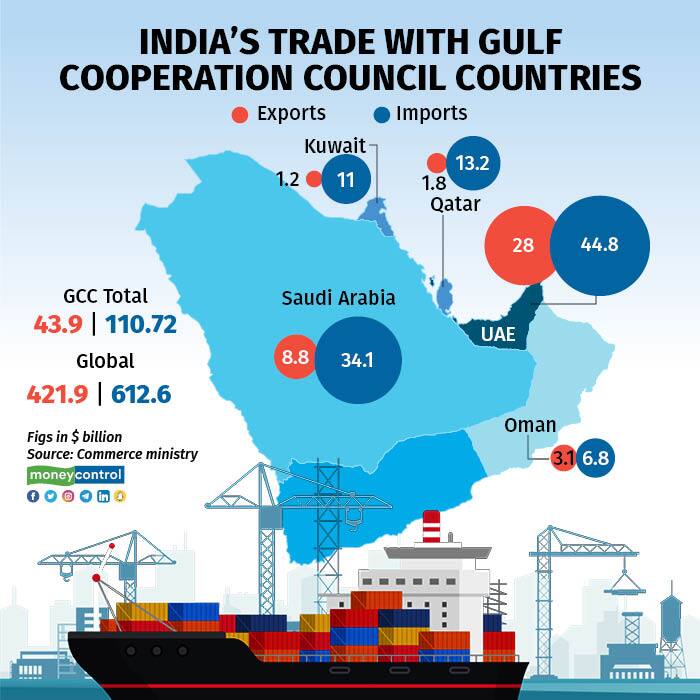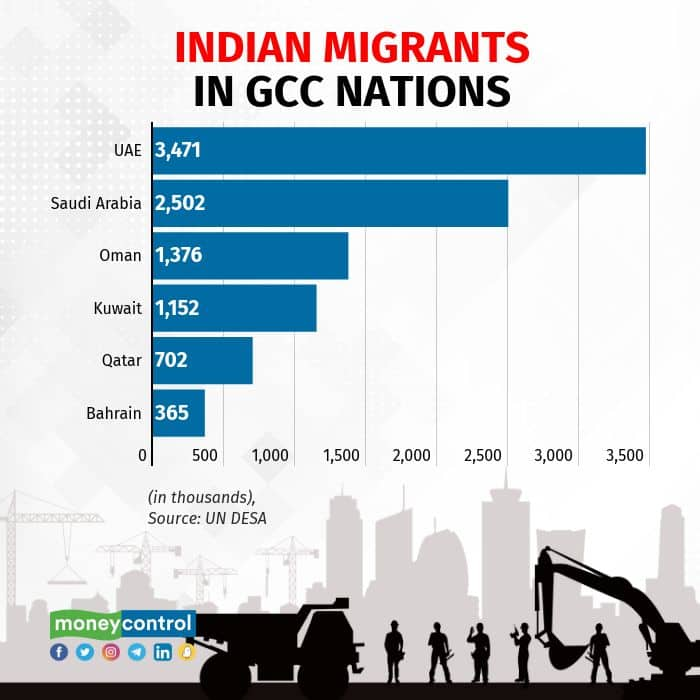



The Indian government’s prompt move to calm West Asian nations’ fury following offensive statements by spokespersons of the ruling BJP underscores the importance the country attaches to nurturing trade and economic ties with the countries in the region.
India had concluded a Comprehensive Economic Partnership Agreement (CEPA) with the United Arab Emirates (UAE) in February, the first free trade agreement to be signed by the Modi government in its eight years in office.
The deal foresees raising bi-lateral trade with the Emirate from $60 billion to $100 billion in five years and allows Indian products to be imported with a nil duty. India’s labour-intensive industries are expected to be among the beneficiaries of the trade agreement.
A call to boycott Indian products in some West Asian countries could potentially slow down or even jeopardise plans for a comprehensive free trade agreement with other nation in the region as well as the six-nation Gulf Cooperation Council (GCC).
The two sides have set the end of 2022 as the deadline for concluding initial discussions with GCC.
The UAE is India’s third-largest trade partner, while GCC nations together account for about 15 percent of India’s merchandise trade.
Also read: Kuwait supermarket removes Indian products as BJP faces Mideast furore over Prophet remarks
Petroleum crude dominates the trade with the region and is the chief contributor to the wide trade imbalance. India exported goods worth $44 billion in 2021-22 and while imports topped $110 billion.
A successful conclusion of the free trade agreement with GCC is necessary to narrow the trade imbalance as well as diversify the trade basket.

GCC nations are also among the largest employers of migrant workers from India, particularly those with low skills and also the source of 50-55 percent of the personal remittances transmitted to India.
The World Migration Report for 2022, relying on the UN Department of Economic and Social Affairs data, has estimated that 18 million Indian emigrants lived and worked in countries around the world in 2020, making India the largest source of emigrant population.
Of them, about 9.6 million lived in GCC nations, including 3.5 million in the UAE. Those numbers would have declined due to job losses caused by the pandemic-related economic disruptions.
India-UAE is the world’s third-largest corridor of migratory movements after Mexico-USA and Syria-Turkey.
India-Saudi Arabia is the ninth-largest corridor, while India-US is the sixth largest. Indians were also the largest group of emigrants from any nation in Saudi Arabia, UAE, Oman and Kuwait.

India received an estimated $83 billion as remittances in 2020, which may have grown to $87 billion in 2021.
The US, UAE and Saudi Arabia were the top three sources of remittances globally in 2020 but the latest share outflows to India in these remittances are not readily available in the public domain.
Also read: BJP denounces insult of any religious personalities of any religion
A recent World Bank report estimated the share of the US in the remittances received by Indian households at about 20 percent. The Reserve Bank of India had estimated that 27 percent of the remittances received in 2016-17 originated in UAE.
A robust inflow of remittances is important for India as, together with earnings from service exports, it helps finance the trade deficit.
At a time when crude oil and other commodity prices have flared, ballooning the import bill, the trade deficit will widen if merchandise exports fail to keep pace with imports.
Antagonising the GCC nations when India is keen to bargain a better deal on oil prices and expand trade ties can have an undesired fallout.
Discover the latest Business News, Sensex, and Nifty updates. Obtain Personal Finance insights, tax queries, and expert opinions on Moneycontrol or download the Moneycontrol App to stay updated!
Find the best of Al News in one place, specially curated for you every weekend.
Stay on top of the latest tech trends and biggest startup news.